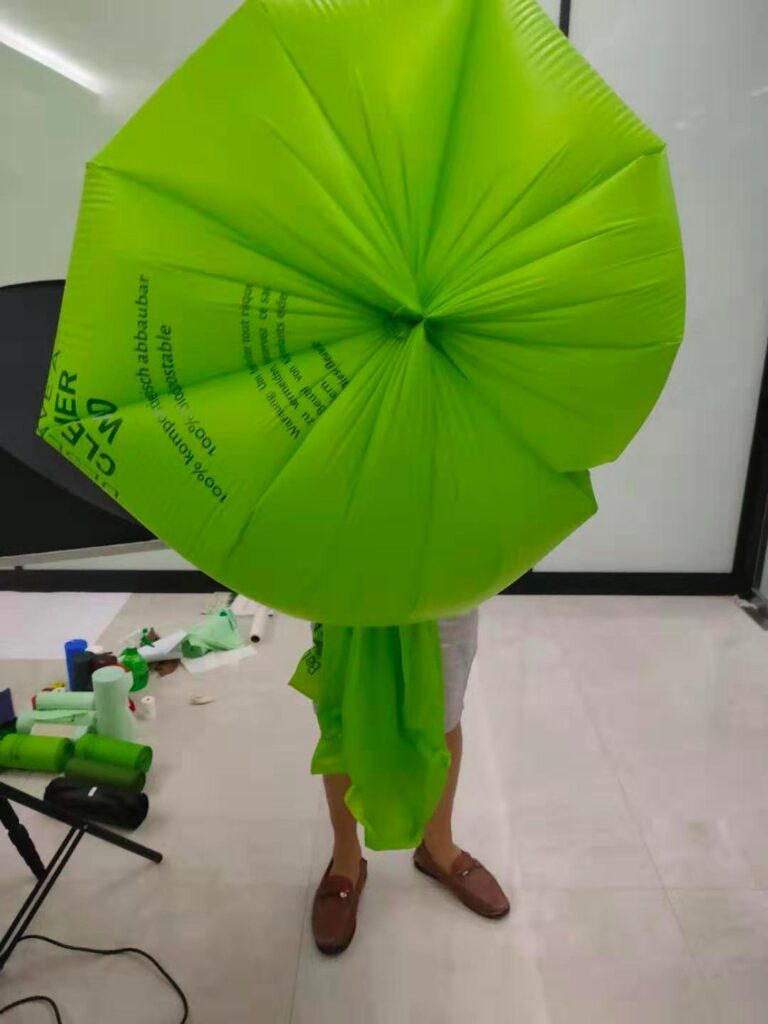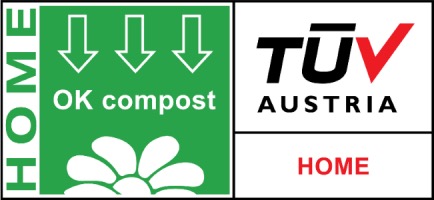A practical buyer’s guide to compostable lawn, yard & leaf bags—sizes, thickness, certifications, storage, MOQ, pricing signals, and quality checks.
Compostable lawn bags; compostable leaf bags; yard waste compostable bags; 30-gallon compostable bags; 39-gallon compostable bags; OK compost HOME; ASTM D6400; EN 13432; BPI certified compostable bags; drawstring compostable trash bags; biodegradable yard bags; wholesale compostable bags.
Why compostable lawn & leaf bags matter now
Municipalities and landscapers are collecting more yard trimmings than ever, while retailers want packaging that aligns with zero-waste goals. Compostable lawn & leaf bags are engineered to contain bulky, sometimes wet organic matter—leaves, grass clippings, small branches—then break down under composting conditions without leaving persistent residues. When specified correctly, they help divert organics from landfill and reduce contamination in green-bin programs.
Note: Certifications like ASTM D6400 (North America) and EN 13432 (EU) define how products must disintegrate and biodegrade in industrial composting; OK compost HOME covers lower-temperature, home settings. ASTM International | ASTMen.tuv.atbe.tuvaustria.com
Common sizes, formats, and what they’re best for
Most lawn & leaf programs revolve around larger liners. Typical formats include:
- 30-gallon liners (approx. 26–30 in width × 36–40 in height): popular for residential carts and lighter yard waste.
- 39-gallon liners (approx. 30–33 in × 39–43 in): a versatile workhorse for mixed leaves and grass clippings.
- 48–55-gallon liners (approx. 36–40 in × 46–50 in): for bulkier piles, community clean-ups, or landscaper crews.
Tip: Dimensions vary by supplier and bag style (flat-seal vs star-seal). Ask for a size chart matched to your bins/carts before ordering.
Roll vs flat-packed
- Coreless rolls: compact, easy to dispense in the field; ideal for crews.
- Flat-packed: lower roll-memory (bags open flatter), helpful for retail shelves and box-in-box packaging.
Thickness, strength, and film design
Compostable film strength depends on the resin system (commonly PBAT/PLA blends; sometimes with starch or PHA), film gauge, and converting quality.
- Gauge selection: Heavier wet loads, twigs, or curb-dragging require thicker film; lighter, dry leaves can use thinner film. Instead of chasing one “magic” micron, request application-based samples and run a field test with your heaviest expected load.
- Seals: Star-seal bottoms distribute stress and reduce corner leaks; flat-seals give maximum internal volume and a neat rectangular base.
- Tear & puncture: Ask for Elmendorf tear and dart-impact benchmarks (or at least internal QC equivalents).
- Slip & anti-block: Proper additive levels prevent bags sticking together without compromising compostability. (Your supplier should confirm additive compliance with the chosen certification scheme.)

Certifications buyers should verify (and why)
- ASTM D6400 / D6868 (industrial composting, North America): establish biodegradation, disintegration, and eco-toxicity criteria for labeling plastics as compostable. A widely recognized path to third-party validation via BPI Certification. ASTM International | ASTM BPIWorld
- EN 13432 (industrial composting, EU): equivalent market expectation in Europe; OK compost INDUSTRIAL references this norm. en.tuv.at
- OK compost HOME (TÜV AUSTRIA): for lower-temperature, home composting environments; applicable to certain lightweight bags and formats. be.tuvaustria.com

What to ask suppliers
- A current certificate (PDF) and the exact scope (product name, thickness range).
- Printing rights for the certification mark and the required on-bag text.
- Coloring/labeling expectations for your market (e.g., US programs often prefer green/beige/brown tints and clear “COMPOSTABLE” text; check local rules and BPI guidance). BPIWorld

Storage, shelf life, and handling
Compostable films are more sensitive to heat, humidity, and UV than conventional plastics.
- Warehouse climate: Aim for cool, dry storage (e.g., ~20–25 °C / 68–77 °F, ≤55% RH where possible). Avoid stacking near heat sources or in sun-lit areas.
- First-in, first-out (FIFO): Rotate pallets; target use within the supplier’s stated shelf-life window.
- Packaging: Request moisture-barrier inner bags or shrink overwrap for ocean shipments and monsoon routes.
- Field handling: Educate crews to avoid prolonged sun-baking in open trucks and to double-bag only when loads are unusually wet or thorny.
Labeling, printing, and customer education
- High-contrast “COMPOSTABLE” text on two panels improves recognition at curbside.
- Include the certification logo + license number where permitted, and a disposal instruction (“For industrial composting where accepted” or “Home compostable—check local guidelines”). Follow the mark-use rules from the certifier. BPIWorld
- For the US, aligning with BPI’s labeling/coloring guidance reduces contamination risk in organics streams. BPIWorld
MOQ, lead time, and pricing signals (what really drives cost)
Exact numbers vary by facility and print complexity, but you can forecast using the drivers below:
- Resin mix & film gauge: Higher-performance blends and thicker gauges increase kg/bag and resin cost.
- Bag format: Star-seal vs flat-seal, gussets, and drawstring features add converting steps.
- Print: Number of colors, coverage %, and water-based ink choice affect cost and scheduling.
- Cartonization & pallets: Retail-ready boxes vs bulk shipper cartons, plus pallet height limits for sea freight lanes.
- Cert marks: If your exact spec isn’t within existing certificate scope, extra testing/labeling steps may apply (ask early). BPIWorld
Typical B2B ranges: Most buyers see custom-spec MOQs set by film run size and printing (e.g., a few thousand to tens of thousands of bags per spec). For plain, unprinted liners, MOQs can be lower; for multi-color retail packs, plan higher. (Ask us for a sample bill-of-materials and a trial lot based on your heaviest load case.)
Quality checklist before you place a PO
- Confirm bin/cart fit with a size mock-up (width × height, gusset).
- Run a wet-load test: freshly cut grass + leaf mix; lift-and-drag over rough ground.
- Seal integrity: check star-seal symmetry or flat-seal alignment across 10 random pieces/roll.
- Openability: crew-friendly separation on rolls; no excessive blocking.
- Labeling: certification logo, license number, disposal language placed per rules.
- Storage trial: keep a case in your actual warehouse for 2–4 weeks; inspect before full rollout.
- Carton spec: verify count/bundle, gross weight, carton strength, and pallet pattern for your route.
FAQ
Are lawn & leaf bags home-compostable?
Some are, but most large-format liners are industrial-compostable only. If you need home compostability, ask for OK compost HOME scope at your target gauge and run small-batch trials. be.tuvaustria.com
Will compostable bags break down on the shelf?
Not if stored correctly. Heat and humidity accelerate aging—control them and use FIFO.
Can we use any green color and the word “compostable”?
Follow your certifier’s mark-use rules and local labeling expectations to avoid contamination and greenwashing concerns. BPIWorld
Ready to trial?
HEMCBags can supply 30–55-gallon compostable lawn & leaf liners with custom gauge, print and packaging, plus certification-aligned labeling. Send your bin dimensions, the heaviest expected load, and your warehouse climate—our team will propose two test gauges and ship field-trial samples.
- Explore category: Compostable Trash Bags & Liners
- Talk to us: Contact

